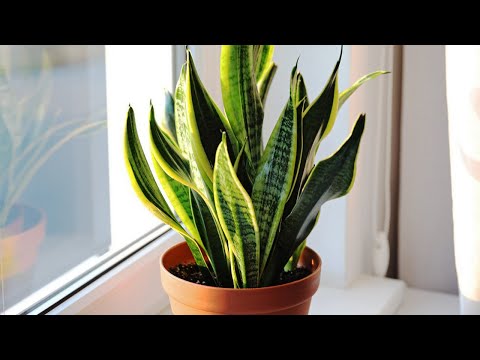Known as snake plants, viper’s bowstring hemp, and Sansevierias, these plants are tough and can be grown at home. They require little maintenance.
These hardy plants are easy to maintain. These beauties almost thrive on neglect.
However, many people are unaware of how much light a snake plant needs.
How Much Light Does a Snake Plant Need?
Indirect light is ideal for the growth of all snake plant varieties, in addition to medium intense natural light. You can also grow them under artificial light, but the growth rate will be much slower.
Plants grow in a variety of light conditions.
It is important to create the correct environment for the growth of snake plants, even though they can live in a variety of conditions. In a variety of light intensities, snake plants prefer medium to bright light but can grow in much lower light intensities.
Conditions of low lighting
In places with low light and shady corners, snake plants grow. Different from most plants, these versatile plants tend to do better in low-light environments. However, their growth can be a little slower.
It doesn’t matter if you put your snake plant in a dark corner of your office, for example, the lack of light won’t affect it. A plant in indirect sunlight will be much more colorful than one not in that same situation. For bedrooms, we think that they would be a good option.
Because of this, don’t place snake plants in areas with no windows or natural light.
Conditions of Medium Light
Medium light is best for snake plants. It is ideal for them if sunlight is diffused to provide them with natural light.
The optimal spot is near a bedroom window that faces east so that plenty of sunlight can enter in the mornings. For snake plants, the best location is also a spot that doesn’t receive direct sunlight.
Conditions of high light
High light levels are acceptable for snake plants. In full sunlight, they will grow. However, if your plant has been growing inside, putting it in full sun can burn its leaves. A little droopiness can also be caused by the disease.
The better choice is to provide indirect sunlight to your plants.
Getting Snake Plants to Grow in Artificial Light?
If enough artificial light is available, you can grow these multi-purpose plants indoors. Many houseplants can be grown with artificial lighting, but they cannot replace sunlight full-time.
There are several types of artificial lighting that affect snake plant growth in different ways.
Fluorescent Lights
Light bulbs containing fluorescent bulbs have more blue wavelengths of the light spectrum, and these wavelengths are important to the normal growth of foliage.
They can be used with “warm” or “full-spectrum” light bulbs, which have more red wavelengths. Root formation requires red light. Soft white fluorescent tubes can also be used.
Your houseplant will stay cool when you place fluorescent light near it. The best results can be achieved by placing the light source near the foliage. Besides being popular, it is also cost-effective.
Incandescent Lights
The red wavelengths supplied by incandescent lights stimulate root formation. Utilize incandescent lighting as a supplement to fluorescent lighting.
You can achieve a good balance of light intensity by using one-third incandescent light and two-thirds fluorescent light.
Light bulbs that use incandescent bulbs are more heat-generating than those that use fluorescent bulbs. Place them farther away from the plant.
LED Lights
Another low-heat light source is the light-emitting diode (LED) lights. This technology is new and customizable. Plants require both blue and red light wavelengths to thrive. You can get LED lights that produce both.
LED light bulbs are energy-efficient and long-lasting, but they can be costly compared to other choices.
Halogen Lights
The full light spectrum is provided by halogen lights. Also, they generate more heat than fluorescent lights and are less energy-efficient, so they must be placed further away from the plant.
How much light or less light your Snake Plant needs
Your snake plant needs more light if you notice its leaves drooping and looking sad with downward sagging leaves. Put it somewhere in indirect sunlight rather than high-intensity sunlight all of a sudden.
It is a sign your snake plant needs less light when you see the leaves starting to thin or blacken. If you place the snake plant in a slightly darker corner, the edges will start getting brown and crispy.
Lighting Snake Plants wrap up
You can still grow your own piece of nature, whether you are a beginner in gardening or a seasoned plant lover, with these durable indoor plants. The snake plant is one of nature’s most beautiful and versatile plants.
Green plants require little attention and can be easily cared for. The best spot to place them in is a spot with indirect sunlight, so simply place them in a spot that is medium, natural light.
______________________________________________________________________________________________________________________________
There are still many recent and interesting articles about Jade Plants..
..as well as other unique information from All Things Gardener..
For further information and other inquiries..
..you can contact us here


